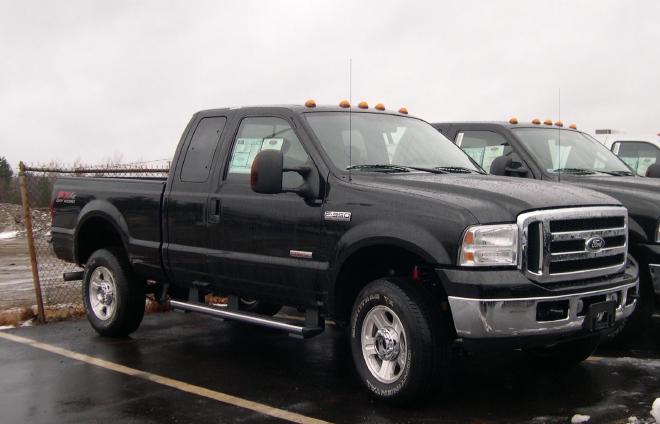1. Introduction #
Why Getting into High Vehicles Matters #
High vehicles like SUVs offer many advantages, from increased visibility on the road to added cargo space. However, for some individuals, getting into these taller vehicles can be a challenge. Whether you’re a newcomer to high vehicles or facing mobility issues due to age or similar factors, this guide will provide you with the knowledge and techniques to make getting into your high vehicle easier and safer.
Who Can Benefit from This Guide #
This guide is designed for:
- Individuals new to driving or owning high vehicles
- Seniors and those with limited mobility
- Anyone looking for tips and tricks to make high vehicle entry a breeze
Now, let’s dive into the world of high vehicles and discover how to conquer the challenge of getting in and out of them.
2. Understanding High Vehicles #
What Defines a High Vehicle? #
High vehicles, which include SUVs, trucks, and crossovers, are characterized by their elevated ground clearance and higher seating positions compared to standard cars. This design offers several advantages, such as better visibility on the road, improved off-road capabilities, and increased cargo space.
Types of High Vehicles #
-
SUVs (Sport Utility Vehicles): SUVs are known for their versatile capabilities, making them a popular choice for families and adventurers alike. They come in various sizes, from compact to full-sized SUVs.
-
Trucks: Pickup trucks are known for their powerful engines and payload capacity. They’re favored for work and recreational purposes.
-
Crossovers: Crossovers combine the features of SUVs and traditional cars, offering a comfortable ride and ample cargo space.
Benefits of Owning a High Vehicle #
- Enhanced road visibility, which improves safety.
- Easier access to cargo in the rear.
- Off-road capabilities for adventurous journeys.
- Towing capacity for trailers and boats.
- Spacious interior for passengers and belongings.
Now that you understand high vehicles better, let’s move on to preparing yourself for high vehicle entry.
3. Preparing Yourself for High Vehicle Entry #
Assessing Your Mobility #
Before diving into the techniques, it’s crucial to assess your mobility. Take note of any physical limitations, injuries, or conditions that may affect your ability to get into a high vehicle.
Health Considerations #
Consider consulting with a healthcare professional if you have specific health concerns that affect your mobility. They can provide personalized recommendations to make high vehicle entry safer.
The Importance of Footwear #
Choose appropriate footwear that provides good traction and support. Avoid high heels, flip-flops, or shoes with slippery soles, as they can increase the risk of accidents.
With these considerations in mind, let’s explore various techniques for getting into a high vehicle.
4. Techniques for Getting into a High Vehicle #
The Traditional Method #
The most common way to enter a high vehicle is as follows:
- Stand facing the open vehicle door.
- Place one hand on the door frame or roof for support.
- Use your other hand to hold onto the steering wheel, seat, or handle inside the vehicle.
- Carefully lift one leg and pivot it into the vehicle.
- Slowly lower yourself into the driver or passenger seat.
Using Grab Handles #
Many high vehicles come equipped with grab handles on the A-pillar or inside the vehicle door. These handles provide extra support when entering or exiting the vehicle.
Using Running Boards or Side Steps #
If your high vehicle has running boards or side steps, use them to your advantage. These accessories offer a stable platform for stepping into the vehicle.
Utilizing Handrails #
In some cases, you might find handrails or straps attached to the vehicle’s interior roof. These can be particularly helpful for maintaining balance during entry.
Continue reading to discover tools and accessories that can make high vehicle entry even easier.
5. Tools and Accessories for Easier Entry #
Swivel Seats #
Swivel seats can be installed in your high vehicle, allowing you to pivot the seat towards the door for easier entry and exit.
Transfer Boards #
Transfer boards are flat boards that bridge the gap between your wheelchair or mobility device and the vehicle seat, simplifying the transfer process.
Portable Step Stools #
A portable step stool can be carried in your vehicle and used as a stepping aid when needed. Choose one with a non-slip surface for added safety.
Car Door Strap Handles #
These handles attach to the inside of your vehicle door frame and provide a stable grip for pulling yourself in.
6. Adapting Your High Vehicle #
Adjustable Seat Height #
Some high vehicles offer adjustable seat heights. If available, set your seat to a height that allows for easier entry.
Customizing Your Vehicle’s Entry/Exit Settings #
Check your vehicle’s manual for information on adjusting entry and exit settings. These settings can include seat position, steering wheel height, and more.
Choosing the Right Vehicle for Your Needs #
If you’re in the market for a high vehicle, consider models that offer features designed to make entry and exit more accessible. Look for wide door openings and low step-in heights.
7. Exercises and Stretches for Improved Mobility #
Leg and Hip Exercises #
Regular exercises to strengthen your leg and hip muscles can improve your mobility and make it easier to lift your legs when getting into a high vehicle.
Example Exercises:
- Leg lifts
- Hip flexor stretches
- Squats
Core Strengthening #
A strong core helps you maintain balance when stepping into a high vehicle.
Example Exercises:
- Planks
- Seated leg raises
- Russian twists
Flexibility Training #
Stretching exercises can enhance your flexibility, making it easier to maneuver your body into the vehicle.
Example Exercises:
- Hip stretches
- Quadriceps stretches
- Hamstring stretches
8. Safety Tips #
Maintaining Proper Balance #
Focus on maintaining a stable center of gravity and avoid leaning too far when entering or exiting your high vehicle.
Avoiding Common Mistakes #
Learn about common mistakes that can lead to accidents, such as rushing or failing to check your surroundings.
Using Caution in Slippery Conditions #
Be extra cautious in wet or icy conditions, as the risk of slipping is higher. Consider using anti-slip mats or footwear in these situations.
9. Getting Assistance #
Asking for Help from Passengers #
If you have passengers with you, don’t hesitate to ask for assistance. They can provide support and stability during entry and exit.
Mobility Aids and Devices #
Explore the range of mobility aids available, such as canes, walkers, or mobility scooters, to assist with high vehicle entry.
Community Resources #
Look for local organizations or support groups that can provide guidance, advice, and resources to make high vehicle entry easier.
10. Maintaining Independence #
Building Confidence #
Believe in your ability to master high vehicle entry. Practice regularly and celebrate your progress.
Overcoming Fears #
If you have fears or anxieties about high vehicle entry, seek support from a therapist or counselor to address and overcome these concerns.
Celebrating Your Achievements #
Recognize and reward yourself for each successful entry and exit from your high vehicle. Building confidence is a journey, and small victories matter.
11. Conclusion #
Recap of Key Points #
In this comprehensive guide, we’ve explored techniques, tools, exercises, and safety tips to help you confidently get into your high vehicle. Remember:
- Assess your mobility and health considerations.
- Choose appropriate footwear.
- Use the right techniques for your needs.
- Explore tools and accessories.
- Stay active with mobility exercises.
- Prioritize safety at all times.
- Don’t hesitate to seek assistance when needed.
- Build confidence and maintain your independence.
With these insights and strategies, you can conquer the challenge of getting into a high vehicle and enjoy the many benefits they offer. So, go ahead, take the driver’s seat, and hit the road with confidence!

